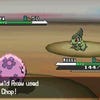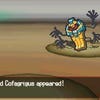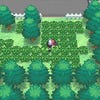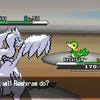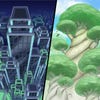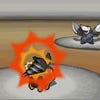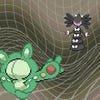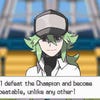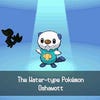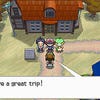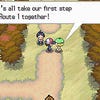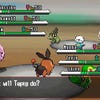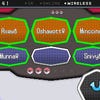Pok¨Śmon Black & White
Monochrome magic.
If you're on the outside looking in, the Pokémon series probably looks like the same game released over and over for 15 years, each time to fresh brood of gullible children. It's not a fair or correct assumption, but I can see where you're coming from.
Pokémon reinvents itself to a greater or lesser extent every three years or so, but half-steps like Platinum and remakes like HeartGold muddy the distinction between generations. And where Silver and Gold's astonishing sprawl of new features more than justified their existence (and their re-release last year), Diamond and Pearl's more timid adjustments to the formula were less defensible.
It's about time for a spring-clean, and Pokémon Black and White are exactly that. Game Freak has abandoned the guaranteed brand recognition of Pikachu and his 500-odd friends for an entirely new cast of 156 quirky, endearing, and occasionally disturbing monsters. It's difficult to overstate how unexpectedly brave this is for a heavyweight Japanese series; imagine Capcom releasing a new Street Fighter without Ryu and Ken. It signals an eagerness to break with the past, a new spirit of regeneration.
Over the course of 40 hours, Pokémon Black and White has surprised me over and over again. The last time I could say that about a Pokémon game, I was still carrying around a Pikachu-adorned pencil case.
Here's the first surprise: it looks brilliant. Evidently Game Freak has finally hired some new graphic designers. Pokémon's monster design has always been exceptional, but otherwise the graphics were rarely better than tolerable.
Now the battles come alive with entertaining monster animations, the cities are constructed of distinctive 3D buildings, and towns are connected by towering bridges that stretch over sparkling water and reveal distant skyline vistas. The sprites are bright and crisp, long grass sways in the wind, and the world's weather changes along with the seasons once every real-time month. Fittingly for what might be the DS' last heavyweight titles, they're among the best-looking on the platform.
And the second surprise: you don't always know what's next. Yes, you know that you'll make the familiar pilgrimage from town to town, collecting gym badges and eventually facing the Elite Four, but it's all about those new Pokémon.
Wander into the grass in a new area and you genuinely have no idea what you're about to meet. When a Pokémon evolves, you're excited about what it might become. New moves make you raise an eyebrow and read the description. It all feels new again, and it makes such a difference. There's not a Pidgey or Rattata in sight.
This sense of reinvigoration extends across the whole of Black and White. Game Freak is as willing to re-evaluate and throw out its out-dated traditions as its bloated cast. The biggest change is the distribution of experience points: monsters now get a far bigger share of EXP when they defeat foes stronger than themselves. This not only evens out the process of building a strong, balanced team, it makes over-levelling impossible. Grinding – what little there was of it – has been completely eliminated.
Pokémon Centres and Marts have been merged into one building, and there are Pokémon healers dotted around caves and inter-city Routes to prevent you hiking back to them three times an hour. TMs, the items that let you teach Pokemon new moves, are now infinite-use, so you can experiment with them more freely. This indicates a better understanding of what makes Pokémon so compelling: creating and customising your team.


